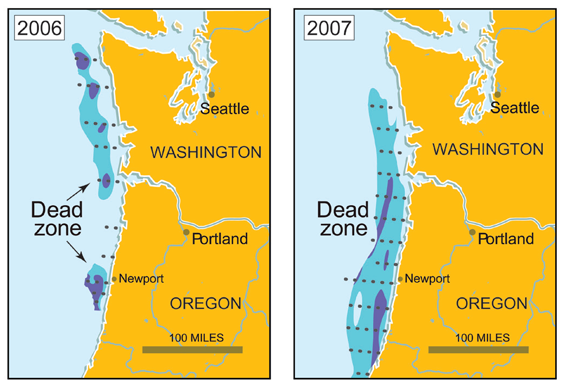Historic eutrophic and hypoxic zones, from the World Resources Institute's interactive map
Advertisement
Advertisement
Dead menhaden float in the Bay in this 1973 EPA photo
Advertisement

Via the EPA
Advertisement
Via NASA Earth Observatory
Advertisement

Dead zones on the northern Pacific coast are affected by
changing currents, which the US Global Change Research
Program notes can be influenced by climate change.
Advertisement
